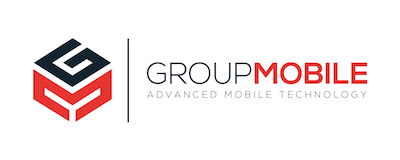The public safety sector is on the forefront of real-time data use. The value of real-time data is almost immeasurable as having access to true, real-time data can save lives. Given this, the
The ideal best practice for every organization is to pilot a technology before procurement, but this is not always feasible and many budgets don’t allow for trial and error testing.
Talk to other agencies
How do you know what to shop for when selecting a new mobile technology solution? Group Mobile suggests choosing a mobile device that has the right feature set for your needs or will be able to fulfill all of your agency’s operational requirements in a single device. There is no reason to procure a device that falls short of your agency’s needs. Also, finding a solutions integrator who fully understands all elements of your organization from pre-deployment, deployment and post-deployment professional services.
When it comes to mobile technology deployments, Group Mobile knows the road. Many mid-size cities, towns and counties have similar workflows and, therefore, similar mobile device requirements.
Before buying, do your research and talk with other agencies that mirror yours. Set up a call with them or meet with them in person to understand the lessons they’ve learned in their mobile journey. You’ll find that agencies are always willing to help another agency and give you an honest assessment.
What to look for
This portfolio list of options will help you focus your requirements and conduct a full analysis of your own current technology portfolio to make early decisions regarding:
- Operating system preference: The applications you choose will drive your OS decision. Most public safety agencies choose to run Windows for compatibility and security. Though there are new applications arriving on the Android platform today that may benefit some organizations. Fortunately, fully rugged Android tablets are now available.
- Mobile data and mobile device security: This may include VPN access, multi-factor authentication, fingerprint readers, Common Access Card (CAC) readers, TPM, Kensington physical locks and other internal and external measures.
- Data entry tools: Do you need the flexibility of keyboard and touch for data entry? Do you need a digitizer pen (which is much more accurate than a stylus)?
- Size and weight: Do you prefer a larger 10-12” screen for easy, full-page viewing of documents and apps? Or can you make do with a 5” screen? Can your techs juggle a 5+ pound notebook and patient care in the field? Or do they need a more lightweight 2-4-pound solution?
- Wired and wireless connectivity: How many I/O ports do you need? Which I/O ports do you need? Will your teams have access to Wi-Fi hotspots all the time, or do they need multiple wireless network and ancillary device connectivity options such as 4G LTE, Wi-Fi, Bluetooth, IP, Gobi 3000
- Rugged requirements: Which MIl-STD-810G and Ingress Protection (IP) rating levels are enough – and how much is too much? It depends on how often your mobile device will be exposed to water, dust, humidity, or corrosive elements, for example, and how prevalent shock or vibration will be in the vehicle. Will the device be used in potentially explosive environments? Make sure it’s also ATEX or C1D2/C1Z2 compliant for Hazardous Locations.
Impediments to true public safety mobility – inappropriate form-factors, fragile devices, heavy notebooks, weak data radios, limited mobile workflow software – are a thing of the past. The decision to go mobile today is just that – a decision to go mobile. Real-time information, streamlined reporting and constant communication make your service to the community faster, better and safer.
Make smart, near-term buys to lay a foundation for a full mobility solution with long-term return on investment. That may be just a handful of rugged tablets to power a new dispatch system. But it gives you time to fine tune your solution, define next best steps, and measure ROI.
One of the most challenging elements of implementing or upgrading a technology solution is achieving the return on investment. When you invest in technology to improve your business, you must be confident the investment will pay off in the end. It is critical you reach the maximum benefits in the time frame desired for your new technology solution. Group Mobile will identify the benefits available to your company based on a return on investment mobility model, and deliver technology solutions and services to ensure a successful outcome.
Group Mobile’s team of industry experts can assist you in selecting, designing and implementing a multi-network environment for mission-critical fleets, request a free personalized quote.


